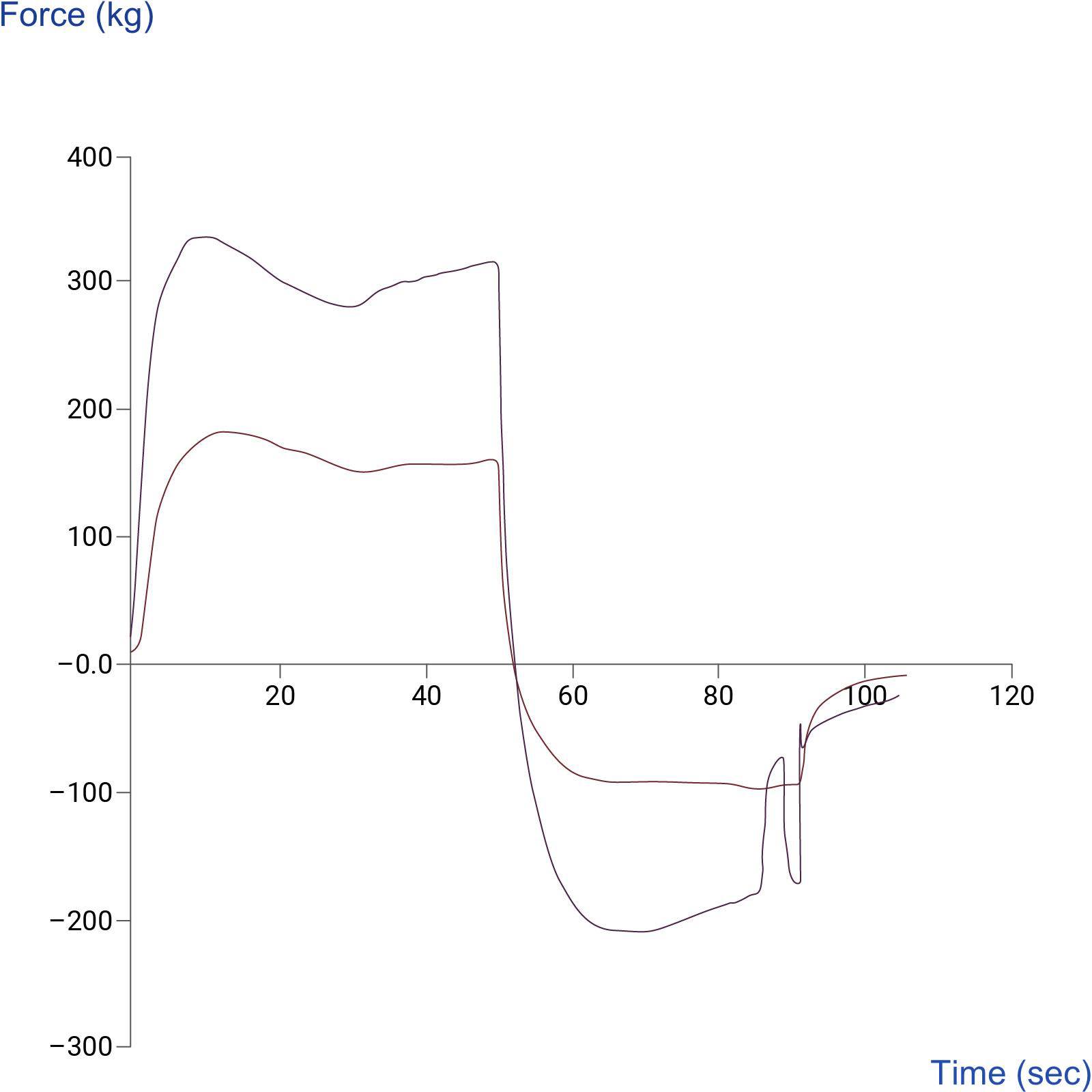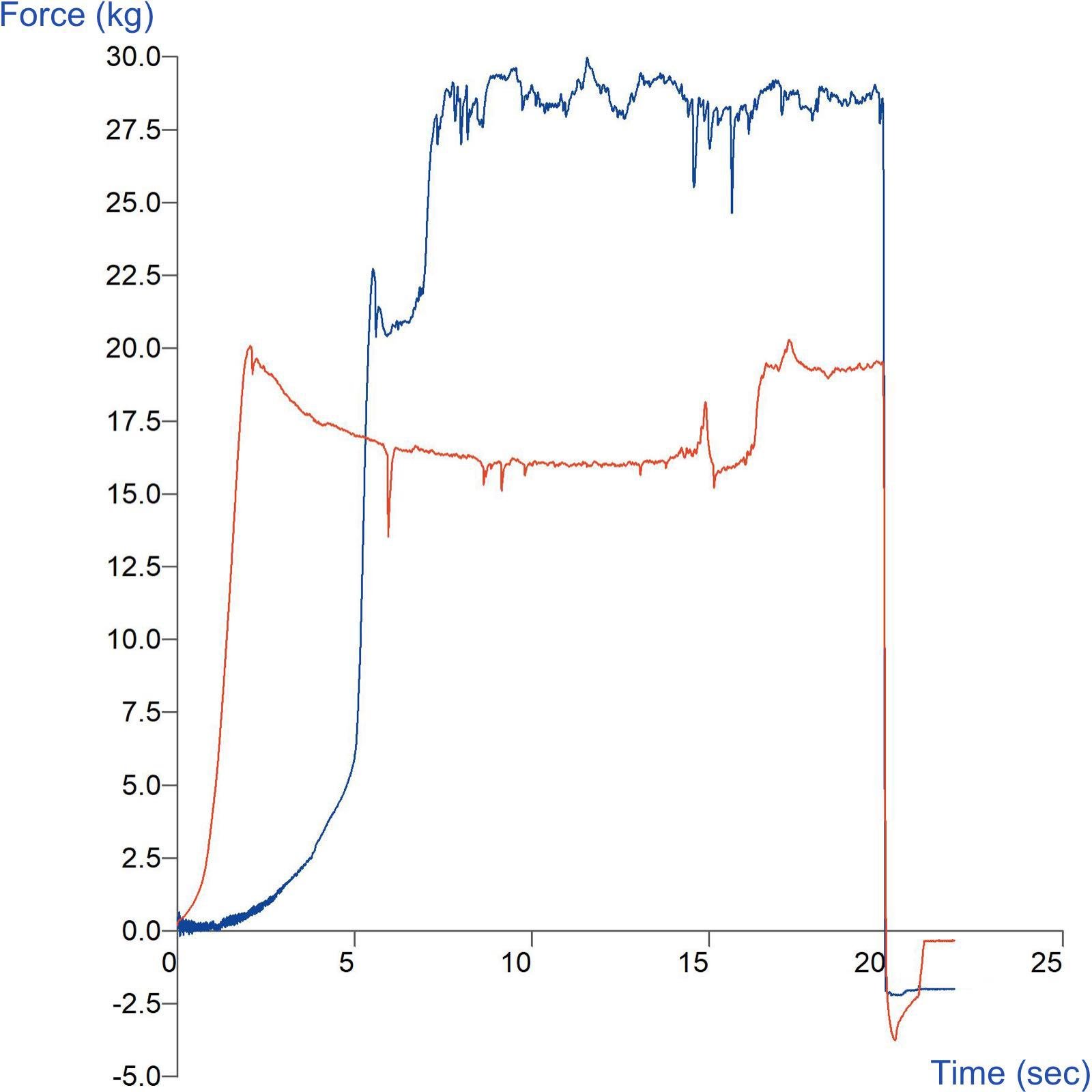Extrusion testing
Learn about extrusion testing, when to use this test type and the typical probes and attachments for use on a Texture Analyser.




What is an extrusion test?
An extrusion test measures how easily a semi-solid or viscous product flows when compressed through (forward extrusion) or around an orifice or disc (back extrusion). Using a Texture Analyser, the test quantifies a material’s firmness, consistency, and extrudability, providing insight into how it behaves during dispensing, spreading, or filling.
Extrusion methods are ideal for materials that cannot support their own structure such as creams, sauces, gels, and pastes and therefore cannot be tested by compression.
How a Texture Analyser performs an extrusion test
There are two main configurations used for measurement on a Texture Analyser:
Back extrusion
During testing, the Texture Analyser drives a disc into the sample (in a container/vessel) at a controlled speed. As material flows up and around a disc, the instrument records force versus distance/time. Because you can test the product in its original container, the structure is preserved (i.e. does not need to be decanted into another vessel), which can be a major advantage. The resulting curve identifies resistance to flow, cohesiveness, and total energy required to extrude the sample. It allows measurement of both extrusion and cohesion during disc withdrawal. It is ideas for viscous products and is more able to measure product containing particulates.
Forward Extrusion
With a Forward Extrusion Rig, the sample is compressed by a piston through an annulus (e.g., 3, 5, 7 or 10 mm) in the base of the vessel, simulating flow through an outlet. It is only suited to homogenous viscous materials without particulates like pastes or gels.
Typical graphs produced and properties measured
Extrusion tests can quantify a wide range of mechanical and textural properties, including:
- Firmness - Maximum resistance to flow
- Consistency/Thickness
- Extrudability - Total energy required to force the sample through or around an orifice
- Cohesiveness
- Dispensing/Syringeability
Single or multiple parameters such as peak force, work of extrusion, cohesion upon probe withdrawal and slope/modulus can be collected from the graph. Understanding these parameters reveals key flow behaviours and allows direct comparison between samples or production batches.
To learn more about how these properties are measured, visit our Textural Properties page.
A Texture Analyser records a force-distance (or force-time) curve during extrusion, revealing key flow behaviours:
- Initial slope: Elastic resistance of material before yielding
- Peak force: Maximum load required to start flow – indicates firmness or structural integrity
- Area under curve: Consistency related energy required to maintain flow
- Negative force (back extrusion only): Cohesiveness during probe withdrawal
Choosing a probe/attachment for sample measurement
Selecting the correct extrusion rig depends on material structure, particle content, and test objectives.
|
Attachment |
Typical use |
Notes |
|
Back Extrusion Rig |
Semi-solids with particulates; products in original packaging |
Allows in-container testing, preserving structure. Ideal for semi-solids containing particulates. |
|
Forward Extrusion Rig |
Smooth pastes, gels, homogeneous viscous samples |
Simulates product flow through an orifice/nozzle; good for comparing consistency and extrusion behaviour. |
|
Sachet/Tube Extrusion |
Measuring dispensing force from tubes or sachets |
Evaluates packaging–product interaction and real-world squeeze/dispense performance. |
|
Universal Syringe Rig |
Syringeable products (e.g., gels, pastes, creams, adhesives) dispensed via standard syringes |
Measures force to extrude through syringe/barrel and tip. Useful for dose/dispense consistency and comparing formulations or nozzle sizes. |
|
Rice Extrusion Rig |
Cooked grains, rice, cereals |
Supports ISO 11747 method; suited to measuring firmness/texture of cooked grain products. |
|
Spreadability Rig |
Spreadable products (e.g., butter, margarine, creams, pastes, pâtés, gels) |
Quantifies spreadability/softness by compressing and spreading sample between plates/cones; helpful for simulating knife/spatula spreading and assessing ease of use. |
Materials and bespoke attachments
Bespoke geometries or materials can be produced to customer specification for specialised tests.
Use cases by industry
|
Industry |
Example Applications |
Suggested Probe/Attachment |
|
Food |
Comparing spreadability of margarine or mayonnaise; flow of sauces or yoghurts; comparing full-fat vs low-fat mayonnaise consistency. |
Back Extrusion Rig; Spreadability Rig |
|
Cosmetics / Personal Care |
Measuring ease of removal and spread of creams, gels, or lotions; testing ease of use of travel-pack sachets. |
Back Extrusion Rig or Forward Extrusion Rig; Sachet/Tube Extrusion Rig |
|
Adhesives / Packaging |
Evaluating sealant extrusion from cartridges; measuring user effort during dispensing. |
Forward Extrusion Rig or Sachet/Tube Extrusion Rig |
|
Pharmaceuticals |
Quantifying ointment or gel flow; assessing syringeability; measuring dosage consistency from packaging. |
Syringe Rig or Extrusion Rig |
Example standard methods using an extrusion test
- ISO 11747 - Cereal and rice extrusion testing
What else do I need to perform an extrusion test?




Probe Adapters
Probe adapters securely mount and align probes on the Texture Analyser. Magnetic and quick-twist options allow quick, repeatable changeovers, boosting throughput when swapping different probes or running multiple tests.

Heavy Duty Platform
Flat, stable base with sample centralisation concentric rings which also raises the sample test area away from the base of the instrument which may become warm over time and will affect temperature dependent samples.

Load Cell
Appropriate Load Cell range for expected flow forces.

Temperature control
For the testing of temperature sensitive samples.
More examples of how a Texture Analyser performs extrusion tests
People also ask
What does an extrusion test measure?
It measures the force and energy required for a viscous or semi-solid sample to flow when compressed, revealing firmness, consistency, and extrudability.
What’s the difference between back and forward extrusion?
Back extrusion forces material to flow around a disc within a container; forward extrusion pushes material through an orifice simulating a nozzle.
When should you use a Forward Extrusion Rig instead of back extrusion?
Use the Forward Extrusion Rig when testing homogeneous pastes or viscous liquids that can flow through a defined orifice. It is less suitable for samples with particulates or in their original container.
Can I test a sample in its original container using an extrusion test?
Yes. With a Back Extrusion Rig you may test in the original container (so long as size is consistent for comparison purposes) to avoid structural disruption from decanting.
Why use extrusion testing instead of compression?
Extrusion is used for semi-solids or pastes that cannot support their own weight, where flow and spread behaviour are more relevant than firmness.
What extrusion test parameters tell me about customer experience?
Parameters such as peak force (how hard it is to squeeze or extrude), work of extrusion (effort over time) and cohesion (resistance to flow) correlate with consumer perceptions of ease-of-use, spreadability and dispensing satisfaction.
Which industries benefit most from extrusion-style texture testing?
Foods (spreads, sauces, gels), cosmetics/creams/gels, adhesives/sealants, and pharmaceuticals (ointments, syringes) all benefit from extrusion tests when flow behaviour and user interaction are critical.


